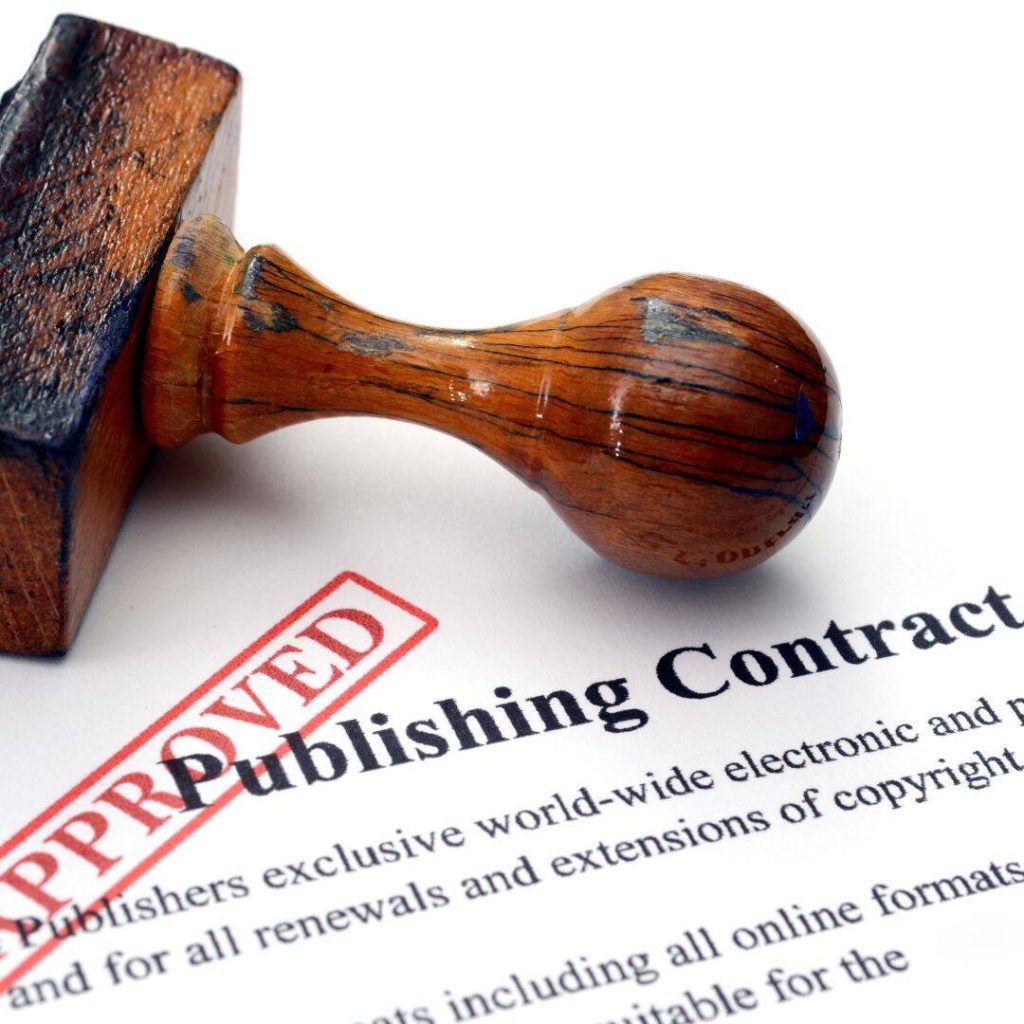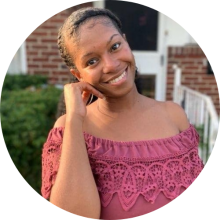Becoming a published author is a dream of many. In fact, during numerous networking ventures, I’ve met many men and women who dream of becoming a published author. I’m living their dream because I am an Author. At times I don’t feel like I am an Author. Although I’ve met many people who want to become authors, I know most won’t achieve their dreams. It’s not because they are unqualified. Becoming a published author can have its challenges.
In this guide, I’ll share a five-step process tailored for writers looking to get their books out there.
Table of Contents
ToggleIntroduction
The journey begins with tailoring your craft and extends to understanding how to get published. Each step is designed to guide writers through the researching, writing, polishing, and editing phases of their work for the publishing world. With hard work and perseverance, writers can use these steps to establish themselves in the publishing space. Let’s dive right into step one: Developing your Book idea.
1. Developing Your Book Idea

The first step in publishing is to develop your book idea. Also, know your purpose for writing. My original Why for writing was to make money online. After I completed my book, my why became much deeper. I was writing to share my story and to help others heal while I healed myself..Laying the foundation is important when writing your book. Make sure you pinpoint a topic that resonates with you and your audience.
Finding Your Niche
Finding your niche is the most essential part of writing your book. Aspiring Authors should ensure their intended audience is interested in reading their work. Don’t make the mistake of writing without the interest of your intended audience in mind. When I wrote my book, I had anxiety sufferers in mind. What I didn’t have in mind were anxiety sufferers looking to heal from their anxiety. As a result, I attracted the anxiety sufferers who weren’t ready to make changes.
Writers should brainstorm and create a bullet-point list of interesting subjects.
I wanted to write about healthy eating, meditation, exercise, and anxiety. I had the most experience with anxiety so I felt drawn to write on that topic. Also, I knew that anxiety was a topic that would have an audience.
- Passions/Expertise: List personal interests or areas of expertise.
- Audience Interests: Identify what potential readers might find engaging.
Creating Ideas
Once a niche is defined, authors must think of many ideas for their book. I believe most writers are familiar with brainstorming sessions. There’s also a strategy called mind mapping. If you’re unfamiliar with the term, it means to write down a central theme and think of new and related ideas that stem from the center. If you don’t know how to set up a mind mapping, there’s one available on my Etsy shop.
Mind mapping is very similar to brainstorming. Other than brainstorming and mind mapping, authors can use writing prompts. Authors must record all their ideas. When I wrote my book, I documented as many ideas that I could recall about anxiety based on my experiences.
- Brainstorming Techniques: Mind mapping, free writing, and writing prompts.
- Idea Documentation: Keeping a journal or digital document for idea storage.
If you need a mindmap to help get you started, I have some available on my Etsy shop.
2. Market Research

The next thing writers must do is conduct market research to ensure interest in their book idea. The last thing a writer wants to do is write a book only to find out there’s no niche. Writers must not reinvent the wheel. Many people before them have already paved the way. All of us authors have to do is pick a profitable niche. My books on Anxiety fall under health and wellness/personal development. The Health and wellness space is a trillion-dollar industry. Also, everyone experiences anxiety so I knew that I picked a relatable niche.
Furthermore, market research involves analyzing existing books in the niche, understanding the target audience, and identifying gaps their book could fill. They look at:
- Competitive Analysis: Use platforms like Amazon to study similar titles. You could also study other book descriptions of best-selling authors.
- Target Audience: Identifying your target audience with surveys, and conducting polls on social media can help define the audience.
- Gap Identification: Your book could fill in the gaps of needs missing in the marketplace. For example, my service is to help navigate the anxieties that come along with the self-publishing process. That is my angle in the Self-Publishing niche.
3. Creating Your Manuscript
After developing the book idea, finding the niche, creating ideas, and doing market research, it’s time to write your manuscript. Creating your manuscript is an important step to becoming a published author. It shows commitment and dedication to writing.
I’ve met many aspiring writers who have expressed interest in becoming a published author but didn’t know where to start. I meet more aspiring writers without manuscripts than with manuscripts. It’s important to keep in mind that manuscripts will be written and revised many times before producing the final draft. That’s why it’s essential to develop the practice of writing.
Writing Consistently

Producing a manuscript requires patience and discipline. I know firsthand how difficult writing consistently can be so it’s best to set up a writing routine for yourself. When writing a blog post, I set a goal to complete one or two sections. I’d become overwhelmed if I attempted to write a 2000-word blog post in one day. Developing a writing schedule is super helpful. Writers could set a daily word count goal. If you’re not into word count, try dedicating an hour or two to writing. I feel accomplished after getting a few sentences written. This is because I am one step closer to completing my work. Furthermore, Using writing tools such as Google Docs or Word Docs helps organize your content.
Editing and Revising To Become a Published Author
Once the initial draft is complete, writers focus on editing and revising. Most writers usually edit their work themselves. This involves reading through for grammatical errors, making sure the point of view is consistent, and reviewing the flow of the manuscript. The first step is usually a self-edit, involving a thorough read-through to check for plot consistency, Fiction writers also make sure that character development is accurate. In my editing process, I use a tool called Grammarly. After doing self-edit, many authors hire professional editing services. It’s an excellent idea to get another set of eyes on your work, in case you or Grammarly missed some edits.
Navigating the Publishing Process
Once a manuscript is polished and ready, an author faces the complex challenge of publishing. Authors will begin to understand and decide to self-publish or look for a traditional publisher. Traditional Publishing was never a consideration for me because I took a course on self-publishing. I was never interested in publishing before discovering the self-publishing course. My interest in publishing grew as I continued my journey and began working with other writers. Furthermore understanding publishing options, contract details, and the importance of self-promotion is essential in this phase.
4. Choosing a Publishing Route
Authors must decide between traditional publishing and self-publishing. When working with a traditional publisher, authors submit their manuscript to a publishing house or literary agent. From my experience speaking with aspiring writers, it is difficult to get a literary agent. For example, someone reached out to me looking for a literary agent. I connected him with a contact in my network who serves as a literary agent. Unfortunately, she did not have an agent who would be a good fit for his work. This man expressed to me that he sought after over 100 literary agents. I am sharing this story to explain how difficult it could be to find a literary agent fit to help publish your work.
Traditional Publishing
Traditional Publishing may take longer but generally includes editorial, marketing, and distribution support.
Keep in mind traditional publishers are selective when publishing authors. Aspiring writers are turned away all the time by Traditional publishers. One reason is traditional publishers purchase services for the book and they need to make back the money they invested. I’ve heard that an audience of 10k or more is a qualification for a Traditional publisher to consider publishing an author’s work. Also, publishing requires more than just talent. There are several guidelines and strategies to follow.
A friend of mine got her children’s book published by Traditional Publisher. The Publisher gave her a $60,000 advance but she was unhappy with the publishing contract. For example, the publisher took away her creative control. My friend was unable to select the illustrator for her work. The Publisher chose her illustrator and included themes in her children’s book that she disagreed with. The Publisher altered her vision for her book. For example, she wanted black and brown children represented in her book because she teaches black and brown children in real life. The illustrator included children of all races. Lastly, the publisher would make more money from her book than she did. One can conclude that I am biased toward Traditional Publishing although I never chose that route.
Self-Publishing
On the other hand, Self-publishing allows for complete creative control and potentially quicker publication. Platforms like Amazon’s Kindle Direct Publishing (KDP) or IngramSpark are popular. The self-publishing course that I took taught me how to self-publish to Amazon. It is a goal to get published on IngramSpark in the future. Here are common options to publish:
- Traditional Publishers: Submit requests to agents/publishers.
- Small Presses: A boutique publisher publishes fewer than 10 titles yearly.
- Self-Publishing Platforms: Services such as KDP, IngramSpark, or Draft2Digital.
Understanding Publishing Contracts

Authors should carefully review and understand their rights, royalties, and advances. When self-publishing through Amazon, the platform informs authors how much they will receive in royalties.
- Rights: What rights you are giving to the publisher (e.g., audio, digital, print).
- Royalties: The percentage of sales you’ll receive.
- Advances: Upfront payments against future royalties. I haven’t seen advances with self-publishing. Advances are usually given with Traditional publishing.
Negotiation is part of this process. Authors may consult with a literary agent or a lawyer to ensure a fair deal.
I work with authors who want to self-publish. I provide a publishing contract but since I use Amazon as my third party, the royalties are factored in with them.
Building Your Author Platform

After an Author has written their book and decided on a publishing method, next comes building the author platform. Depending on the author, this could be fun or bothersome. Most writers want to write and that’s it. Writers aren’t social media influencers but having an established author platform can attract publishers and readers. An author platform usually consists of:
- Social Media Presence: Authors should regularly engage their audiences on platforms such as Instagram, TikTok, Facebook, and Twitter. From my experience, regular engagement is difficult to keep up with.
- Website or Blog: Readers tend to visit the Author’s website or blog to read more about the author. Authors update their audience with new releases, deals, and events from their website or blog. I use my blog as my online diary, detailing my experience as a Self-Published Author building my own digital publishing company. It ain’t easy!
- Email List: Authors should build an email list to communicate directly with their readers. The great thing about email lists is you own that traffic. Keeping them engaged is difficult but Authors can build a dedicated list of readers over time.
5. Marketing Your Book

After all the effort of writing your book, deciding on a publishing method, and understanding publishing contracts, it’s time to put effort into marketing the book. Marketing will get the book into the hands of the right readers. There is a misconception that marketing a book doesn’t have to be done if you publish traditionally but that is not true. Whether publishing traditionally or self-publishing, authors have to develop a marketing strategy. During networking, I once met a woman who shared that she spent $4k to get her book published and marketed. She also shared that the publisher did not do much marketing for her work. It was a shame because they took advantage of her and didn’t reach her expectations. Furthermore, Marketing not only boosts visibility but also increases the potential for sales and lasting readership.
Marketing Strategy for Published Authors

When creating and developing a marketing strategy, authors must consider and include the following:
- Identifying the target audience: An author’s target audience should be decided before writing the book. Even after the book is written, Authors should pinpoint who the book is for based on genre, themes, and reader demographics.
- Choosing the right platforms: Authors must decide which social media platforms will best reach their audience.
- Budget: If you have a budget for marketing, determine how much you want to spend. Most authors start with organic marketing. You could hire a publicist but it may be a good idea to build your audience.
- Planning a timeline: Plan the time spent on each marketing activity, from pre-launch to promotions after release. I missed out on the pre-launch buzz on my first book.
Engaging With Your Audience

Once an author acquires and builds a relationship with their audience, that relationship must be maintained. Think about the relationships you have in your personal life. Those relationships have to be nurtured so that they will continue to grow. Nurturing your audience is a step that authors cannot escape. Effective engagement methods include:
- Creating quality content: Regularly creating blog posts and updates. Readers love behind-the-scenes from their favorite authors. It makes readers feel important, included, and appreciated.
- Interact on social media: Interacting on social media is important. Authors should do their best to respond and join conversations when readers comment.
- Email newsletters: All marketers will share that the money is in the list. Sending out newsletters creates a bond with your readers, making them feel connected to your journey.
Organizing Book Launches and Signings

Events are an excellent way for authors to meet readers and promote their books. I will be a vendor at a local wellness event in a few weeks. At the event, I will promote my book and my self-publishing services. Here are some things to consider when organizing Book launches and signings:
- Choosing the right venue: Pick locations that align with the book’s themes or are popular spots for book launches and signings. A little over a year ago, I traveled to Lancaster PA for a book launch party held by a publishing company called Get It Done. I went to make connections and meet the authors launching their books. I ended up purchasing three of the featured author’s books. In-person Book launches do work. If you prefer a virtual launch, that is also an option. You could host your event virtually and share a QR code where readers can purchase your books.
- Promoting events: Authors could leverage social media, local media, and publisher resources to announce and generate excitement for the event.
- Engaging attendees:t To keep attendees engaged and interested in attending your next event, make it fun. Give some goodies away, and make a lasting impression on attendees. The book signing in Lancaster was at a cute restaurant and they gave us interesting pastries, coffee, and finger food. Also, each author told us about who they were and read a section from their book. Overall it was a fun and memorable experience.
Continuing Your Author Journey
Publishing a book is just the beginning of the author’s journey. Authors will continue to evolve and grow. My first books were about my experience with anxiety. As of now, I do not have any plans to publish any other self-help books. My next book will be about everything I’ve learned in my journey as a self-published author building my business online. The next steps involve expanding past the current reader base and tackling the challenge of writing another book.
Expanding Your Reach As a Published Author
Expanding reach could be simple if the author built a solid foundation for their first book. If not, it may take some time to grow. When I started as an author, consistently writing and releasing books was not my goal. All I aimed to do was share my anxiety story and I just happened to share it in a book. And that’s probably why I don’t feel like an author. I also didn’t put out much author content. My content was based on self-love, self-care, journaling, anxiety, and being transparent. Essentially I was confusing my audience. When I return to social media, my content will be about self-publishing and the work I’ve done with other authors. This will help me expand my reach and attract business owners interested in self-publishing.
To grow your Audience
To grow your audience an author, authors should actively engage with their audience through social media and author platforms.
Authors can do the following:
- Take advantage of Goodreads to connect with readers and join book clubs.
- Build an ARC campaign using Booksprout.
- Start an email newsletter to share updates, excerpts from the book, and giveaways.
Authors may consider creating a content calendar to keep up their online presence. I gave up on social media a few times because I didn’t have a content calendar. The calendar will help you follow a plan for what content you will post on what days. I used to follow the following calendar for my socials:
Self-Care Sunday
Motivation Monday
Top 5 Tuesdays
Winning Wednesday
Thriving Thursday
Freebie Friday
Self-love Saturday
I took a break from social media to focus on networking, writing my blog, and finding clients but when I return, I’ll most likely post one to three times a week.
A few other ways to boost visibility are participating in podcasts, interviews, and magazine features. I’ve been featured in a couple of magazines and I’ve done 10 or more Podcast interviews. I should do more to expand my reach as an author and publisher. I would like to get into public speaking soon. It will be scary but growth and magic happen outside the comfort zone.
Writing Your Next Book

You’ve written, published your first book, and built your audience. Congratulations!
When it comes to writing the next book, authors should:
- Reflect on feedback from their previous work to improve their writing.
-Looking back at my previous work, I discovered my book was a vanity project. I wrote to share my story in hopes of helping someone else but no one knew who I was. My ego made me believe that because Tara Hayes was sharing her story, I would develop a huge following immediately. If I could redo my journey, I would build an audience before writing my book. Think about your favorite actor. Most of them write books after they’ve established their career and already have a loyal following.
- Conduct thorough research to ensure accuracy and authenticity.
Authors want to get the story down in the initial drafting phase. Authors shouldn’t focus too much on grammar and revisions in this phase. Once the story is written authors should focus on revision whether it be refining the plot or storyline characters, and timing of the story.
After revisions comes grammar, clarity, and style of writing. Once authors have their draft, they should consider gathering beta readers or building an ARC team to review the book. Readers will catch errors and give their honest feedback on the book.
Authors should follow the same sequence when writing books in the future.
Final Thoughts
Publishing a book is a tedious process but doable with proper guidance. I learned how to self-publish and my goal is to help as many Wellness Female Business Owners become Self-Published Authors. I’ve successfully helped a handful already.
Are you ready to become a Self-Published Author? Click HERE to book your call with me.
Frequently Asked Questions
The journey to becoming a published author comes with many challenges. It is filled with learning and decision-making. This section answers common questions to guide aspiring authors on their path to publishing.
The first step is writing your outline and completing the manuscript. A writer must have a polished and edited draft before approaching agents or publishers, or considering self-publishing.
Yes, self-publishing is legit and an excellent publishing choice. Self-publishing allows authors full control over their creative work and the selling process. It has become popular over the years with the rise of digital platforms and the creation of digital products.
First-time authors should identify their target audience. They should know why they want to write a book. They should also be aware that it will take more than one book release to establish themselves in the publishing world. First-time authors should have a realistic expectation that their future work will sell better than their first book. Authors should focus on developing their writing skills and connecting with other writers and professionals in the publishing world.
A ‘published author’ means that one’s work has been written, published in a book or article, and made public. Authors can choose to publish traditionally or self-publish.
Writing and publishing courses are helpful. I took a self-publishing course and that’s how my author journey began. Writing courses teach valuable information such as storytelling techniques and keeping course takers up to date with changes in the publishing world.
The journey can be challenging, with potential challenges in editing, formatting, finding an agent a trusted publisher, and marketing. Persistence and learning from mistakes are crucial. Securing a publisher would be easier for aspiring authors with huge followings. Self-publishing is an alternative but it doesn’t mean the journey will be easier. There’s a learning curve in both traditional and self-publishing.
